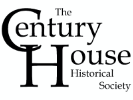The Century House Historical Society presents and preserves information about the Cement industry, the related D&H Canal and railroads, local history, business documents, photographs, geological information, and much more! Links to more information are presented in bold!
- The region’s history begins by dialing back the clock to the Ordovician, Silurian, and Devonian eras, where you discover the geologic processes underlying the economic development of the Natural Cement District. Here’s a link to more information on the geology of this region.
- Rosendale natural cement was used in the construction of many historic structures of the 19th century, including the Erie Canal, Brooklyn Bridge, the pedestal of the Statue of Liberty, the Capitol, the NYS Thruway, the Croton Aqueduct, and many more structures.
- Here is a timeline of some of the history of the Rosendale Cement district and CHHS.
- Here’s a short article by David Levine in Hudson Valley Magazine on the history of the Rosendale Cement Industry. The technical paper the article refers to can be found in the Geology section of this web site.
- William G. Williams told these fascinating, sometimes personal stories of Rosendale back in 1989.
- The Widow Jane Mine, open to the public, has a history of its own as it adapted through the decades. It’s now used primarily as a performance space, and occasionally as a location for movies, television, and music videos.
- The Snyder Estate has a well preserved barge slip that was connected to the D & H Canal. Here’s a report about the canal slip.
- The Historical Society produces a newsletter, “The Natural News”, with articles on history and geology, and events presented at the estate. Many of the back issues are presented here.
- Here is a paper on the old stone houses of Rosendale. Presented by Alan Mackenzie in 1930!
